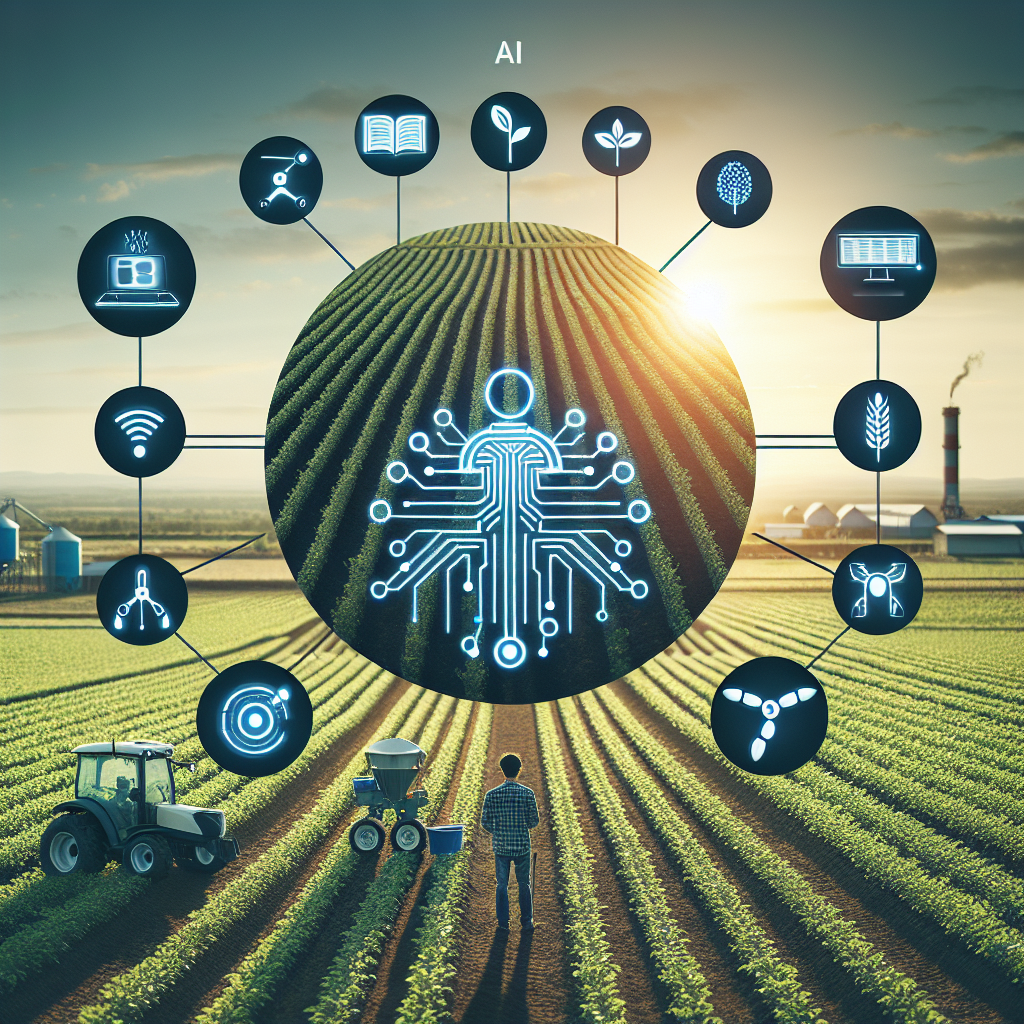Conversational AI in Agriculture: Improving Efficiency and Sustainability
In recent years, the agriculture industry has seen a rapid increase in the adoption of technology to improve efficiency and sustainability. One of the most exciting advancements in this field is the use of conversational AI, also known as chatbots or virtual assistants, to help farmers and agricultural businesses streamline their operations and make data-driven decisions.
Conversational AI refers to the use of artificial intelligence technology to enable natural language interactions between humans and machines. In the context of agriculture, this technology can be used to automate tasks such as data collection, analysis, and communication, freeing up valuable time for farmers to focus on other aspects of their business.
One of the key benefits of conversational AI in agriculture is its ability to provide real-time insights and recommendations based on data collected from various sources, such as sensors, drones, and satellite imagery. For example, a chatbot could analyze weather data and soil conditions to recommend the optimal time for planting crops or applying fertilizer. This can help farmers make more informed decisions and improve the overall productivity of their operations.
Another advantage of conversational AI in agriculture is its ability to facilitate communication and collaboration among stakeholders in the industry. For example, a chatbot could be used to connect farmers with agronomists, suppliers, and buyers, enabling them to exchange information and coordinate activities more efficiently. This can help reduce the risk of crop failure, optimize the use of resources, and improve the profitability of farming operations.
In addition to improving efficiency, conversational AI can also help promote sustainability in agriculture. By providing farmers with personalized recommendations for crop management, pest control, and irrigation, chatbots can help reduce the use of chemical inputs and water resources, leading to a more environmentally friendly and sustainable farming practices.
Furthermore, conversational AI can help address the challenges posed by climate change and other environmental factors that impact agriculture. By analyzing historical data and trends, chatbots can help farmers anticipate and adapt to changing weather patterns, pest outbreaks, and market conditions, enabling them to mitigate risks and optimize their production processes.
Overall, conversational AI has the potential to revolutionize the agriculture industry by making it more efficient, sustainable, and resilient in the face of challenges. As this technology continues to evolve and become more widely adopted, we can expect to see significant improvements in the productivity and profitability of farming operations around the world.
FAQs
Q: How does conversational AI work in agriculture?
A: Conversational AI in agriculture works by using natural language processing technology to enable interactions between farmers and virtual assistants, such as chatbots. These virtual assistants can automate tasks such as data collection, analysis, and communication, providing farmers with real-time insights and recommendations to improve their operations.
Q: What are the benefits of conversational AI in agriculture?
A: Some of the key benefits of conversational AI in agriculture include improved efficiency, sustainability, and collaboration among stakeholders in the industry. By providing farmers with personalized recommendations based on data analysis, chatbots can help optimize crop management practices, reduce the use of resources, and mitigate risks associated with climate change and other environmental factors.
Q: How can farmers adopt conversational AI in their operations?
A: Farmers can adopt conversational AI in their operations by leveraging existing chatbot platforms or developing custom solutions tailored to their specific needs. They can also integrate chatbots with other technologies, such as sensors, drones, and satellite imagery, to collect and analyze data more effectively and make data-driven decisions to improve their farming practices.
Q: What are some examples of conversational AI applications in agriculture?
A: Some examples of conversational AI applications in agriculture include weather forecasting, soil analysis, crop monitoring, pest control, and market analysis. Chatbots can provide farmers with real-time information and recommendations to help them make more informed decisions and optimize their production processes for better efficiency and sustainability.

